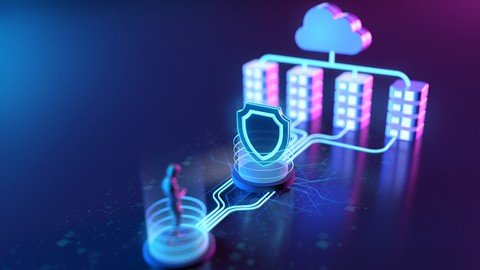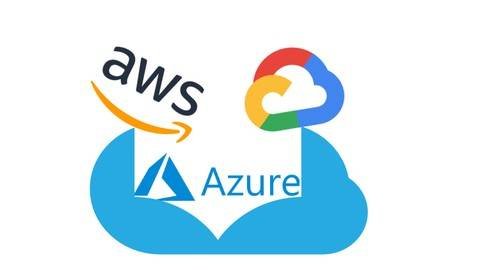Learn about the fundamentals of AWS services such as EC2, ELB, ASG, RDS, ElastiCache, and S3. Discover how to leverage these services to build scalable and reliable applications in the…
Try these 18 AWS Interview Question Answers

AWS Technical Interview is critical. show your best performance by having great knowledge By learning AWS thoroughly. These 18 AWS Interview question answers will help I n a great way to increase your knowledge, to make you more confident in your technical Interview.
===================================
Question 1) What is the difference between HVM and PVM?
Answer: AWS used XEN as a hypervisor layer to spin up all the virtual machines.
Linux Amazon Machine Images use one of two types of virtualization: paravirtual (PV) or
hardware virtual machine (HVM). The main difference between PV and HVM AMIs is the way in which they boot and whether they can take advantage of special hardware extensions (CPU, network, and storage) for better performance.
AWS recommends the use of current generation instance types and HVM AMIs when you launch your instances.
AWS Interview Question Answers
[ufwp search=”AWS MasterClass: Go Serverless with AWS Lambda & AWS Aurora” items=”1″ template=”list”]
Question 2) What is the difference between Security groups and NACLs?
Answer: With AWS, Once can harden their instances in 3 ways, It can be OS-level firewall, Security, and Network Access Control Lists (NACLs).
Both security groups and NACLs together helps to build a layered network defense.
Also, a subnet can only be associated with 1 NCAL and if not associated explicitly would be associated implicitly with the default NACL.
Question 3) How many IAM keys can a user have?
Answer: At time a user can have only 2 active IAM access and secret key.
Question 4) What will you do if a server in your environment gets compromised and you have your AWS keys on that?
Answer: Firstly, I’ll stop the instance so that the attacker will not be able to reach other instances or if there is no critical workload.
I will terminate it (Assuming I have the latest AMI of that instance).
Secondly, as there is an access key configured on the server.
I’ll inform the team about the incident, create new access and secret key, replace the existing key if it is used somewhere else and revoke the old key.
Also, I’ll make sure that going further the keys should not be used on the instances and this can be achieved using the IAM roles.
Question 5) How will you revoke the access keys?
Answer: Console > IAM Consoles > User > Security credentials > make inactive.
Question 6) How will you do hardening of a new AWS account?
Answer:
1) Never share the root password with any user and disable the root access keys
2) Create IAM groups and assign required policies
3) Create IAM users and add them into respective groups. Make sure all will have only the required access no additional access will be given to any user without approvals
4) Set a password retention policy
5) Always allow only required rule in NACLs and Security groups
Question 7) How do you configure a public and private subnet in VPC?
Answer:
1) Create VPC, Create 2 subnets, create Internet gateway and assign IGW to the VPC
2) To create a public subnet: Create a routing table associate the subject and create a route using IGW ARN
3) To create a private subnet: Create a NAT gateway, create a routing table, associate the subnet and create a route using NAT ARN
Question 8) How do you update an new AMI in auto scaling group?
Answer: Once a launch configuration group is created you cannot modify it.
In order to change the AMI, you have to create a new launch config group.
After creating the new launch configuration group attach that to the autoscaling group and terminate the old instances one by one.
Question 9) Route53 routing policy use cases
Answer: AWS Route53 is a fully managed DNS service, it allows to host/buy a domain with AWS. Route53 support different routing policy to direct your traffic to your resources.
Policies are Read more here:
http://docs.aws.amazon.com/Route53/latest/DeveloperGuide/routing-policy.html
[ufwp search=”AWS” items=”1″ template=”list”]
Question 10) What are the types of pricing models for EC2 instances and what is the difference between them?
Answer: Reserved, Spot, and On-demand instances.
Read more here: https://aws.amazon.com/ec2/pricing/
Question 11) How will you configure password login on your AWS EC2 instance?
Answer:
1) Create a user, assign a password to it
2) Make entry in /etc/sudoers.d/
3) Edit /etc/ssh config file and uncomment Password Authentication Yes
Question 12) You have two servers (A & B) in your AWS account and you have allowed ssh access between both of them, but you are not able to ping each other. What could be an issue and how do you resolve it?
Answer: ICMP protocol is not allowed between them to allow the same insecurity group. In the case of ICMP are allowed in security groups. Then allow ICMP on the NACLs
Question 13) Where do you define your subnets while configuring autoscaling?
Answer: You neither define subnets while configuring launch configuration nor while configuring auto-scaling. Subnets are defined while creating ELB.
Question 14) How do you see and retrieve the files from Glacier?
Answer: Amazon Glacier provides a management console, which you can use to create and delete vaults.
However, you cannot download archives from Amazon Glacier by using the management console.
To download data, such as photos, videos, and other documents, you must either use the AWS CLI or write code to make requests, by using either the REST API directly or by using the AWS SDKs.
AWS Interview Question Answers
Question 15) Difference between AMI and Snapshot?
An Amazon Machine Image (AMI) is a template that contains a software configuration (for example, an operating system, an application server, and applications).
From an AMI, you launch an instance, which is a copy of the AMI running as a virtual server in the cloud.
Whereas for Snapshots You can back up the data on your EBS volumes to Amazon S3 by taking point-in-time snapshots.
Snapshots are incremental backups, which means that only the blocks on the device that have changed after your most recent snapshot are saved.
When you delete a snapshot, only the data exclusive to that snapshot is removed.
[ufwp search=”AWS learning” items=”1″ template=”list”]
Question 16) What is a Bastion host?
Answer: Bastion is like jump servers to allow access to the host in the private subnet.
The configurations usually work like below:-
- Bastion needs to configured to allow inbound ssh access (TCP – 22) only from restricted ips (103.252.24.158/32, 32 here indicates exact IP address)
- Instances in the Private subnet then allow inbound ssh access only from the bastion host
Question 17) I have created an EBS volume but I’m not able to attach to my instance. What could be the issue and how to resolve it?
Answer: Possibly, the instance and volume are in different AZs. Create a snapshot of that volume, create the volume using the snapshot in the same region where the EC2 instance is launched and attach it to the instance.
Question 18) How do I change an EBS volume type and increase a volume size?
Answer: Create a snapshot of that volume. Create a new volume using that snapshot, while you create a new volume you’ll get an option to select volume type and change disk size.
However, you cannot reduce the size.
Check out these useful courses for Mastering AWS
[ufwp search=”AWS” items=”6″ template=”grid” grid=”3″]
AWS Interview Question Answers
https://in.pinterest.com/itexamtools/Agile project management Artificial Intelligence aws blockchain cloud computing coding interview coding interviews Collaboration Coursera css cybersecurity cyber threats data analysis data breaches data science data visualization devops django docker excel flask hacking html It Certification java javascript ketan kk Kubernetes machine learning mongoDB Network & Security network protocol nodejs online courses online learning Operating Systems Other It & Software pen testing python Software Engineering Terraform Udemy courses VLAN web development







